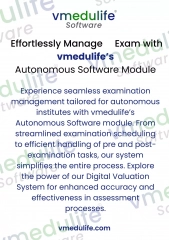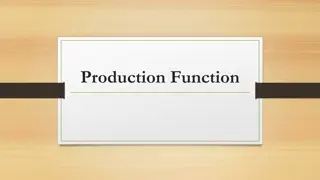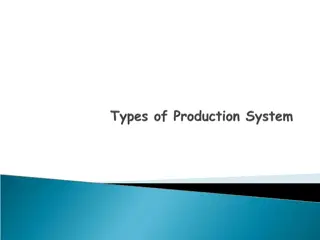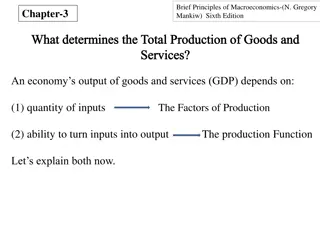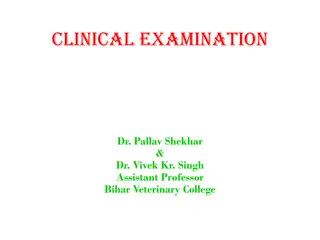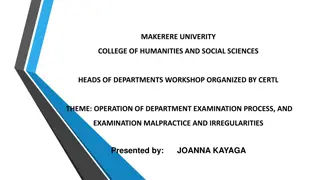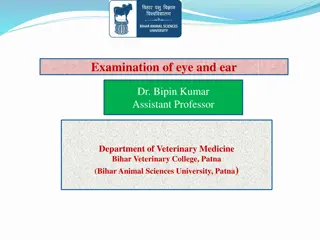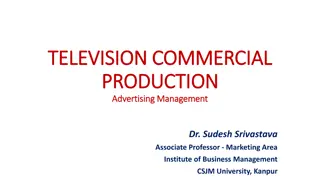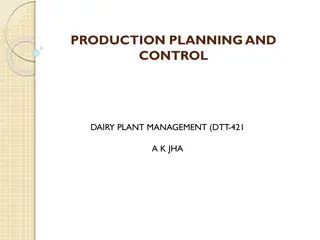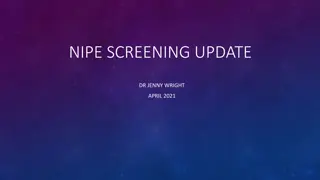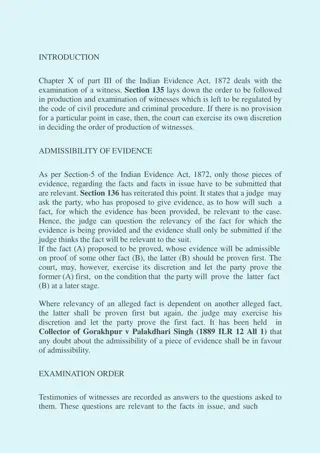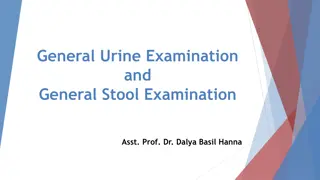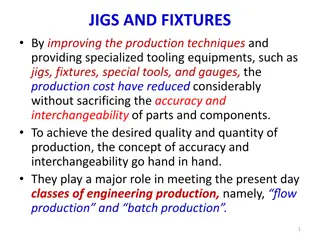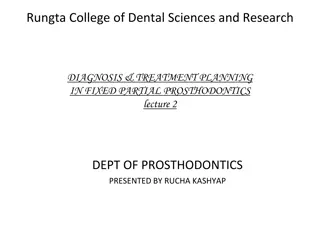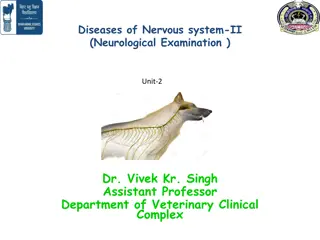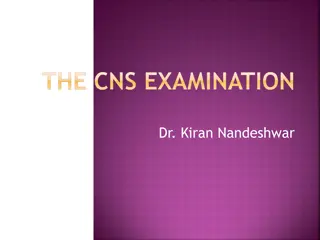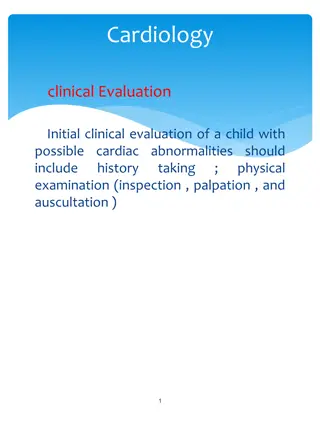
Examiner Performance Optimization Strategies for Patent Operations
Learn about the essential factors examiners need to balance - production, workflow, and quality - to optimize performance in patent operations. Explore the key aspects of examiner appraisal, docket management, production goals, and technology complexity. Find out how productivity, quality, and stakeholder interaction play crucial roles in determining examiner performance ratings.
Uploaded on | 0 Views
Download Presentation

Please find below an Image/Link to download the presentation.
The content on the website is provided AS IS for your information and personal use only. It may not be sold, licensed, or shared on other websites without obtaining consent from the author. If you encounter any issues during the download, it is possible that the publisher has removed the file from their server.
You are allowed to download the files provided on this website for personal or commercial use, subject to the condition that they are used lawfully. All files are the property of their respective owners.
The content on the website is provided AS IS for your information and personal use only. It may not be sold, licensed, or shared on other websites without obtaining consent from the author.
E N D
Presentation Transcript
Examination Time and the Production System Andy Faile Deputy Commissioner for Patent Operations Santa Clara Duke Quality Conference September 9, 2016
What do Examiners need to balance? Production How many office actions / period of time Workflow (Docket Management) Completing those actions within expected timeframe Quality Quality of those actions 3
Examiner Performance Appraisal Plan Examiners performance rating depends on balancing all of these, and more: 35% Productivity 35% Quality 20% Workflow (Docket Management) 10% Stakeholder Interaction 4
Examiner Dockets have Competing Priorities NEW AMENDED TRACK 1 AFTER FINAL CORRECTIONS Which cases to work on? How many cases? When? 5
Production System: Counts Awarded Throughout Prosecution Allowance disposal: 0.75 counts 1st action on merits: 1.25 counts 2nd non- final: 0 counts Final rejection: 0.25 counts Appeal disposal: 0.75 counts 2.0 counts 6
Production Goals Production goals expected for examiners depend on several factors: o Examining Hours per accounting periods o Every two weeks o Every quarter o Every Fiscal Year o Technology complexity o Seniority 7
Production Goals: Examining Hours Includes Excludes All major examination activities Reviewing the application Analyzing the claims Searching the prior art Considering prior art Consulting with colleagues Writing office actions Addressing applicant s responses Leave and holidays Training Staff meetings Programs where examiners receive additional time (AFCP2.0, QPIDS, etc.) 8
Production Goals: Technology and Seniority The Technology Complexity of an application designates the amount of time the examiner is given. 16.6 hours/BD Fishing lures 25.9 hours/BD Immunotherapy 27.7 hours/BD Satellite communication The seniority influences expected production; senior examiners are expected to produce more work than junior examiners. There are as many as nine different levels of seniority 9
Production Goal Calculation: Expected Production Units For 100% of Goal (# of Examining Hours) * (Seniority Factor) "X" BDs* Needed For 100% of Goal (Technology Complexity) *BD is "Balanced Disposal" or "Production Unit" and equals 2 Counts 10
Example: 100% Bi-Weekly Production Goal for GS-7, GS-12 and GS-14 Examiners: All three examiners have the same number of examining hours (72) and the same GS-12 Technology Complexity (16.6 hours/BD): 72 x 0.7 x 2 GS-7: = 6.1 Counts 16.6 72 x 1.0 x 2 GS-12: = 8.7Counts 16.6 72 x 1.35 x 2 GS-14: = 11.7 Counts 16.6 11
Examiners balance multiple priorities In addition to completing work to meet production requirements, examiners must do their work in a timely manner. Workflow (Docket Management) system aligns examiner priorities with statutory requirements. 12
Workflow (Docket Management System) Provides an objective measure of the timeliness and flow of patent applications through the examination process in accordance with prescribed time periods that are set by Office policy. Each application filing falls into one of five categories, each with an associated clock Each category has its own expected average days for completion Uses the same percentage scale as Production 13
Docket Management Scores - General Fewer days to action = Higher Score Meeting expected average days (EAD) (par) = 100% score Above (more days than) EAD (par) < 100% Below (fewer days than) EAD (par) > 100% 14
Summary 15

